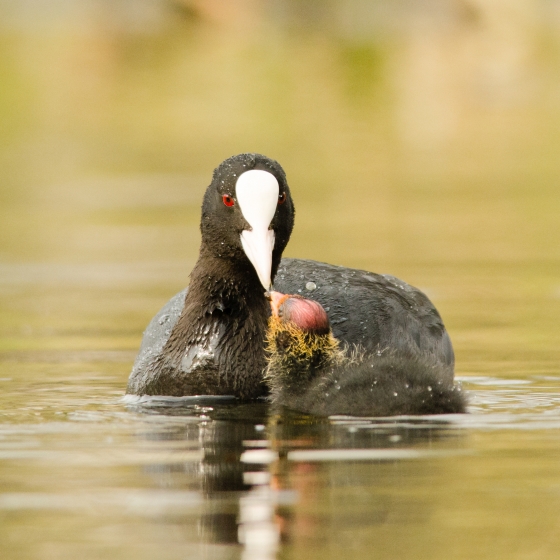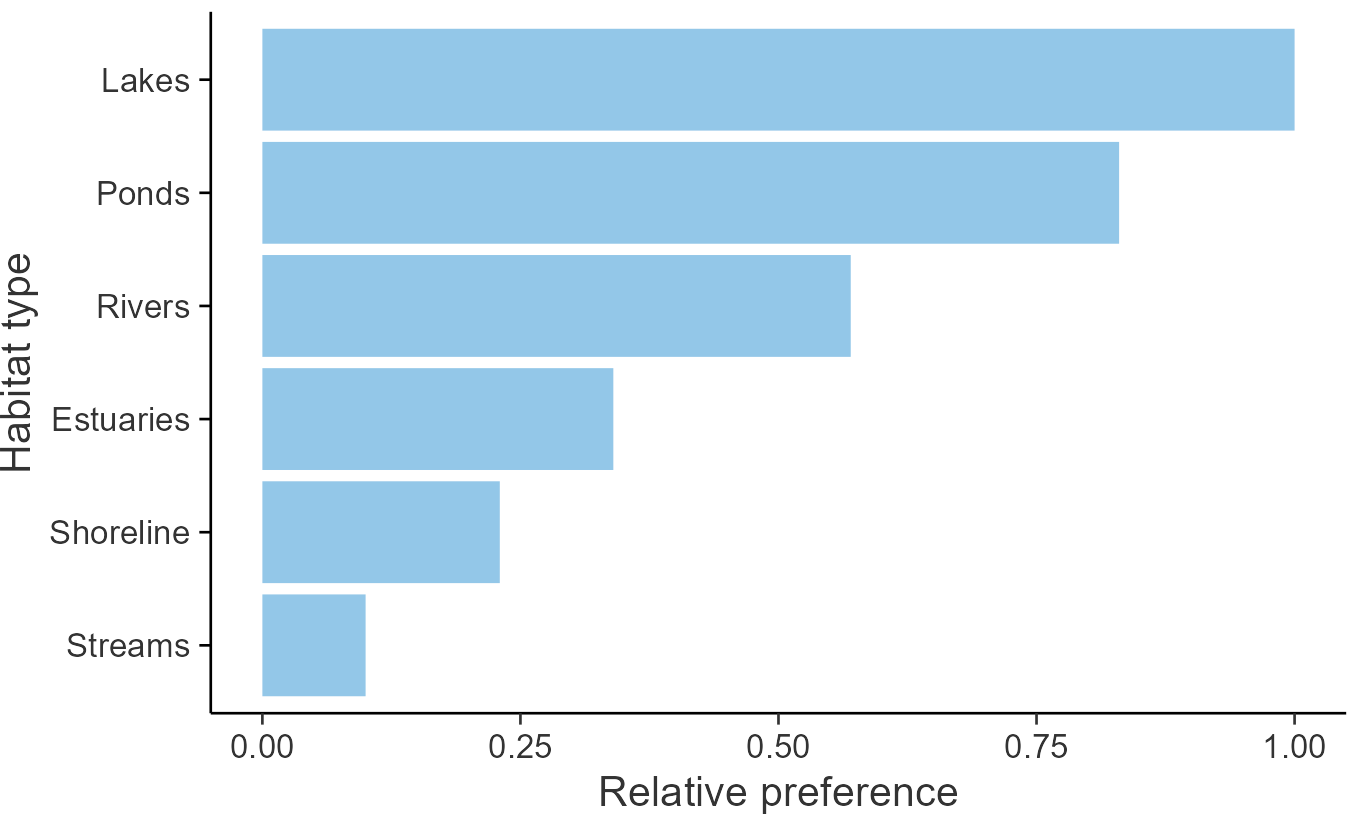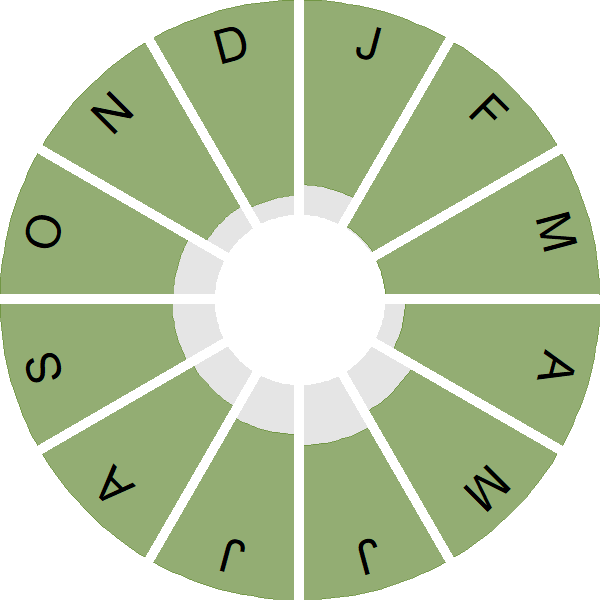Coot

Introduction
This resident waterbird is widely distributed across Britain & Ireland, though absent from upland areas and much of western England and Wales.
Largely herbivorous in its diet, the Coot is a bottom feeder, seizing plant material and returning to the surface to eat it. Because of this, it is more commonly found on our shallower waterbodies. Although not adverse to running water, most Coot are to be found on lakes and larger ponds.
During the winter months, cold weather movements see our resident birds joined by individuals from further east. At this time of the year, Coot may also be seen grazing on short grass close to favoured waterbodies.
- Our Trends Explorer gives you the latest insight into how this species' population is changing.

Key Stats
Identification
ID Videos
This section features BTO training videos headlining this species, or featuring it as a potential confusion species.
Coot & Moorhen
Songs and Calls
Song:
Call:
Alarm call:
Flight call:
Begging call:
Young call:
Status and Trends
Conservation Status
Population Change
CBC/BBS trends for Coot indicate a long-term increase, although the magnitude of the change is not clear and WBS/WBBS trends show a stable long-term trend. Small CBC samples, mainly of birds on small water-bodies, suggested a rapid rise in the late 1960s. WBS/WBBS and BBS include more birds on larger waters, and so may be more representative of Coot populations, but WBS/WBBS has not recorded the rapid long-term increase suggested by the CBC/BBS figures. Both trends show a more recent decline, with the five- and ten-year trends being downward in all indices, and the WBS/WBBS trend shows a moderate decline over the last 25 years. There has been an increase across Europe since 1980, although this trend should be treated with caution as the data from early years are based on limited coverage (PECBMS: PECBMS 2020a>). Winter abundance on large still waters showed shallow increase from the mid 1980s to around 2000/01 but has since declined in all four UK countries (WeBS: Frost et al. 2020).
Distribution
Coots occur throughout most of England, Wales and Ireland, only becoming patchily distributed in upland regions. In Scotland they are highly localised outside the central belt.
Occupied 10-km squares in UK
or view it on Bird Atlas Mapstore.
or view it on Bird Atlas Mapstore.
European Distribution Map
Distribution Change
Coots have disppeared as a breeding species from one third of their former Irish range, possibly as a consequence of drainage of wetlands since the 1970s. The range contraction in Britain is less severe and losses in the upland margins of Scotland and Wales are almost balanced by gains elsewhere in England.
Change in occupied 10-km squares in the UK
or view it on Bird Atlas Mapstore.
or view it on Bird Atlas Mapstore.
Seasonality
Coots are widely reported and present year-round.
Weekly pattern of occurrence
The graph shows when the species is present in the UK, with taller bars indicating a higher likelihood of encountering the species in appropriate regions and habitats.

Habitats
Breeding season habitats
Relative frequency by habitat
The graph shows the habitats occupied in the breeding season, with the most utilised habitats shown at the top. Bars of similar size indicate the species is equally likely to be recorded in those habitats.

Movement
Britain & Ireland movement
Foreign locations of birds ringed or recovered in Britain & Ireland
Dots show the foreign destinations of birds ringed in Britain & Ireland, and the origins of birds ringed overseas that were subsequently recaptured, resighted or found dead in Britain & Ireland. Dot colours indicate the time of year that the species was present at the location.
- Winter (Nov-Feb)
- Spring (Mar-Apr)
- Summer (May-Jul)
- Autumn (Aug-Oct)

European movements
EuroBirdPortal uses birdwatcher's records, such as those logged in BirdTrack to map the flows of birds as they arrive and depart Europe. See maps for this species here.
The Eurasian-African Migration Atlas shows movements of individual birds ringed or recovered in Europe. See maps for this species here.
Biology
Productivity and Nesting
Nesting timing
Egg measurements
Clutch Size
Survival and Longevity
Survival is shown as the proportion of birds surviving from one year to the next and is derived from bird ringing data. It can also be used to estimate how long birds typically live.
View number ringed each year in the Online Ringing Report.
lifespan
Survival of adults
Survival of juveniles
Biometrics
Wing length and body weights are from live birds (source).
Wing length
Body weight
Ring Size
Classification, names and codes
Classification and Codes
- Order: Gruiformes
- Family: Rallidae
- Scientific name: Fulica atra
- Authority: Linnaeus, 1758
- BTO 2-letter code: CO
- BTO 5-letter code: COOT.
- Euring code number: 4290
Alternate species names
- Catalan: fotja comuna
- Czech: lyska cerná
- Danish: Blishøne
- Dutch: Meerkoet
- Estonian: lauk
- Finnish: nokikana
- French: Foulque macroule
- Gaelic: Lach-bhlàir
- German: Blässhuhn
- Hungarian: szárcsa
- Icelandic: Bleshæna
- Irish: Cearc Cheannann
- Italian: Folaga
- Latvian: laucis
- Lithuanian: paprastasis laukys
- Norwegian: Sothøne
- Polish: lyska (zwyczajna)
- Portuguese: galeirão
- Slovak: lyska cierna
- Slovenian: liska
- Spanish: Focha común
- Swedish: sothöna
- Welsh: Cwtiar
- English folkname(s): Snysin
Research
Causes of Change and Solutions
Causes of change
There are no demographic trends available for this species and very little evidence regarding the ecological drivers of change.
Further information on causes of change
There is very little information available regarding the demographic or ecological drivers of population change in Coot.
Demographic data are only available for most recent 15 years, corresponding to a period of decline, and indicate that nest failure rate has increased and there has been a corresponding decrease in brood size over this period.
Brinkhof & Cave (1997) conducted a supplementary feeding experiment and found that seasonal variation in offspring production was in essence the result of seasonal variation in food availability. Thus, increases in food supply may have improved breeding success, but there is no evidence to support this.
Work from Finland (Ronka et al. 2005) has suggested that Coot are sensitive to overwinter weather: thus it is possible that this species may have benefited from milder winters.
Information about conservation actions
The Coot has been increasing over the long-term and the recent downturn in the trend has been insufficient to prompt alerts on the headline (CBC/BBS) trend, and therefore specific conservation action to benefit this species is not currently required. However, given the slight downturn in the BBS trend, and the fact that alerts have been raised against the WBS/WBBS trends, ongoing monitoring is important and conservation actions may be needed in the future. The continuation of local management actions and policies to maintain and create good quality wetland habitats for wildfowl are likely to benefit this species.

